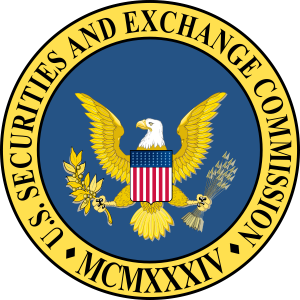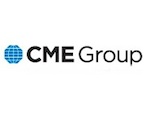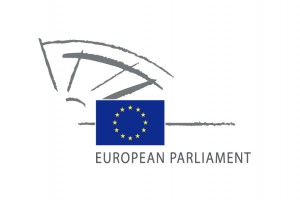As the Chinese curse-proverb would say, "may you live in interesting times" - those are precisely the times in which virtually all financial markets participants are living in right now. As regulators around the globe are pondering what to do in the aftermath of the high-frequency trading scandal that has been rekindled after the release of renowned author Michael Lewis' new book "Flash Boys", the CME Group's units Chicago Mercantile Exchange (CME) and the Chicago Board Of Trade (CBOT) are being sued for allegedly not providing real-time market data to all of their customers.
The scandal resurfaced at precisely the right time for the European legislators to announce that they are indeed working on the issue, as yesterday the European Parliament has announced new legal measures aiming to dwindle high-frequency trading (HFT) activity. However is the framework on which they have been working on solid enough to reign in high frequency traders?
More importantly, why did everyone forget the "flash crash" from May 2010 so quickly and is acting so surprised right now? As many industry insiders are claiming, Michael Lewis' book is not bringing anything new to the table. While that may be true, it did remind the public of an unsolved problem - regulators did not lose any money in May 2010 that's certain, so they did not work hard enough to provide a meaningful answer on how did the "flash crash" happen and what is being done to prevent it from happening again.
The reality that is setting in is that "Flash Boys" served as an alarm bell to the public, stating that their interests might be in danger and a supposedly fair market place that puts nobody's interests (and orders) ahead of anyone else's does not exist. The public's attention has been so consumed by the financial crisis, that nobody decided to pay attention to HFT, or better said - everyone was too preoccupied with the impending disaster and its aftermath instead of worrying about HFT.
When and how did it all start?

Michael Lewis has explained it thoroughly in his book, but briefly said, if one would want to trace the roots of the boom of HFT, we come to track the decisions of the Securities and Exchange Commission (SEC), which responded to cronyism protests by transforming exchanges from being sort of public utilities which are owned by the exchange's members, to public corporations. After an open competition was introduced, the number of exchanges started to multiply.
With the number totaling to 13 by early 2008, every single stock was trading on all of these exchanges. Most of the new exchanges consisted of not of floors but instead they boasted huge rooms filled with servers which executed a program named a “matching engine.”
Regulation "National Market System"
The SEC continues to be at the root of the story, as in 2005 it passed a new regulation named National Market System (known as Reg NMS). It basically required brokers to find the best market prices for the investors they represented and it was not implemented before 2007. Up until then if an investor wanted to buy 500 shares of Apple at $500 a share, when the broker observed that there were only 50 shares offered at $500, he would choose to wait until more sellers showed up. This practice is known as "best execution".
However brokers have started abusing the trust of their clients and the government decided to take the discretion away. Reg NMS replaced the legal definition of best execution with best price, which relied on the notion of the National Best Bid and Offer (NBBO).
Under the new regulation if a client wished to buy 500 shares of Apple, and 50 shares were offered on one exchange at $500 a share, while the full amount was available on other exchanges for $500.01, the broker was required to purchase the 50 shares on the first exchange before moving on to other venues.
That's precisely the moment when the HFT firms stepped in and started to do their own thing by front-running their slower counterparts. Since there are no regulations against this, anyone with the right amount of resources can do it too. But wait, isn't the market supposed to be a level playing field?
As it usually is the case with carelessly drafted regulations, Reg NMS closed one loophole in the market and opened a gap wide enough to create some inequality of opportunity in the U.S. stock market. A small group of companies with vast financial and technological resources have built super fast networks which enabled them to have a look at the market before anyone else did and even make a trade in that minuscule time-frame.
CME Group's CBOT and CME sued by traders

Last week a trio of traders filed a class action lawsuit alleging that the CME Group's units are not offering real-time price information to all of its customers and alleged that order information had been sold to third parties.
The Reality is that the CME and CBOT have been merely following regulations outlined by the above mentioned SEC regulatory framework. HFT entities do not need to buy any order information from the exchanges, all they need to do is to "probe" the market with a small sized order, which would be enough to give them information about the order flow direction.
The CME Group has issued a statement, responding to the allegations that "the suit is devoid of any facts supporting the allegations and, even worse, demonstrates a fundamental misunderstanding of how our markets operate. It is sad when plaintiffs' lawyers bring a suit based on a desire for publicity, and in the rush to file a suit fail to undertake even the most basic effort to determine if there is any basis for their allegations. The case is without merit, and we intend to defend ourselves vigorously."
The European Parliament approves a new set of rules to curb HFT

The European Parliament (EP) has passed new regulations on Tuesday, curbing HFT and allegedly closing some loopholes. According to the EP, the rules are designed to reduce risks associated with “algorithmic” trading that relies on computer programmes to determine the timing, prices or quantities of orders in fractions of a second. Any company which is engaging in any form of algorithmic trading will need to ensure that it has systems and controls in place, such as “circuit breakers” to stop trading process if the market Volatility gets too high. (Wait, isn't that how the flash crash happened - when all HFT algo's halted after the "STOP" button was hit and Liquidity disappeared?)
Let's see how this one works - yet in all likelihood it looks like another case of closing one loophole, while opening another one (arguably much bigger). The legislation adds that "to minimise systemic risk, the algorithms used will have to be tested on venues and authorized by regulators. Moreover; records of all placed orders and cancellations of orders would have to be stored and made available to the competent authority upon request."
One question comes to mind - Which competent regulator would be testing the algorithms, and who would be guaranteeing the firms their proprietary technology will be in safe hands?
The Good, the Bad and the Ugly
Before saying that the population's retirement plans are being ripped off by the high-frequency traders we are willing to point out that if the decisions of the managers of 401K's and mutual funds are sensitive to a 1 cent move (or even a 1% move) in a certain stock, the nation's savings are doomed anyway. It's easy to play the victim and it's easy to point fingers without any substantial evidence on who's "evil" and who's "good".
There are ways for every trader to avoid being "ripped off" by HFT - using entry orders, running their orders through the allegedly fair dark pool IEX or simply engaging in longer term trades which would not be sensitive to fractional cents moves. After all if you would be doing the same trade 10 years ago the spreads would have been much higher than they are today.
The volumes that HFT is generating has undoubtedly led to a more liquid market when conditions are normal, however as the "flash crash" demonstrated they also lead to increased risks when we see some sort of disturbance in the market. Many HFT critics point out that volatility has been much higher in the period after HFT has been introduced, however they don't take into account that the conditions in which we are trading today are quite different to those between 2002 and 2007. The Volatility Index (VIX) is supporting the lack of marked difference - it is currently standing around 15, which is quite far from its long term average of 20 points.
Whichever side of the argument you are on - be prepared for changes. In the financial markets industry, flexibility is more important than knowledge and those who abide the former, survive for longer. Let's hope that regulators think twice before embarking on an ugly crusade and fully reigning in HFT and killing all the benefits that it brought to the marketplace.

















